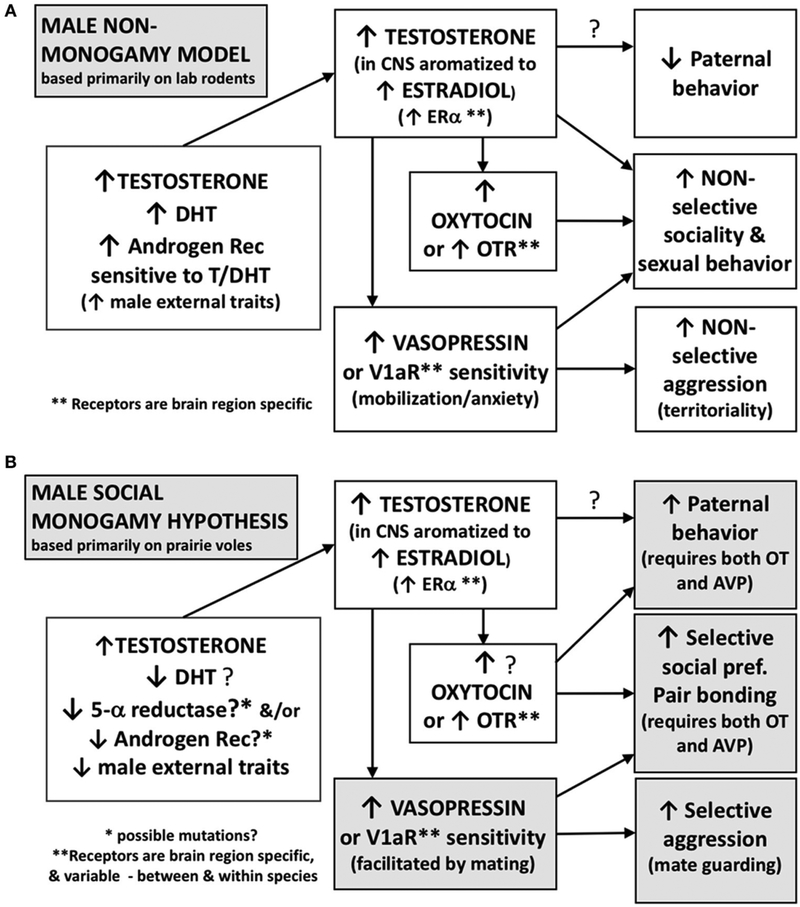FIGURE 2 ∣.
Functional differences in the effects of steroids and peptides may contribute to non-monogamous vs. socially monogamous behavioral phenotypes in males. This hypothesis is based primarily on data from laboratory rodents including prairie voles. (A) Males of non-monogamous species often display a suite of behaviors that include low levels of paternal investment, non-selective social and sexual behavior, and non-selective aggression that typically occurs when competing for a mate or territory. These behaviors are facilitated by high levels of androgens and a high sensitivity of the androgen receptor. High levels of testosterone, some of which is aromatized locally to an estrogen, may contribute to low levels of paternal behavior and lead to non-selective social behavior and mating. In addition, vasopressin, facilitated by androgens, is involved in mating- and territory-related aggression in these males. (B) In socially monogamous males, we hypothesize that decreased sensitivity of the androgen receptor, or possibly lower levels of DHT, with a concurrent increase in vasopressin, could contribute to high levels of paternal investment, selective social preferences, and selective mate guarding aggression. Testosterone can be aromatized locally to estrogen and also facilitate the release of oxytocin and vasopressin.

